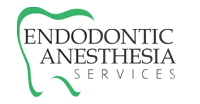These tips and suggestions are for the medical and dental professional and often for the patient. The intent of these writings is always to increase the safety of the patient in the practice of anesthesia and can be many times be transferred to personal use. This blog has been an effort to observe, listen, and read about any ideas that can be used and shared to help a patient achieve comfort, safety and compassion in a surgical procedure. We welcome your comments and feedback.
CHOOSING THE RIGHT AED
Written and published Oct 11, 2016 by J. Tim Russin, DDS
Many state dental practice laws (Florida included) require the office to have an automatic electronic defibrillator or AED.
An AED is used to rescue a patient in cardiac arrest. These devices have proven time after time to help improve patient survival
in a cardiac arrest by providing the necessary electrical shock to the heart to re-establish a normal heart rhythm. AED’s
are commonly seen in public areas like airports, churches, libraries, schools and athletic facilities primarily for the easy and
fast access for their use. Since a heart in trouble needs rescued within minutes to survive, and AED that is 20 minutes
away is totally useless.
An AED is used to rescue a patient in cardiac arrest. These devices have proven time after time to help improve patient survival
in a cardiac arrest by providing the necessary electrical shock to the heart to re-establish a normal heart rhythm. AED’s
are commonly seen in public areas like airports, churches, libraries, schools and athletic facilities primarily for the easy and
fast access for their use. Since a heart in trouble needs rescued within minutes to survive, and AED that is 20 minutes
away is totally useless.
Equally as troubling is an AED with a dead battery. Even if the AED is right in the same room as the patient in cardiac
arrest, no shock to the patient will occur if the internal batteries are weak or expired. Although most newer models begin
to “beep” when the batteries begin to get weak, often ordering a new one requires a phone call or online ordering and shipping
to the office. This can take days, even weeks if the battery is popular and backordered. A “work-around” to this problem is
to have a second AED or an extra battery in stock at the office. This can work, but the backup AED
or separate battery has to be a few years newer than the existing AED so that both units or batteries do not become weak or
expire at the same time.
arrest, no shock to the patient will occur if the internal batteries are weak or expired. Although most newer models begin
to “beep” when the batteries begin to get weak, often ordering a new one requires a phone call or online ordering and shipping
to the office. This can take days, even weeks if the battery is popular and backordered. A “work-around” to this problem is
to have a second AED or an extra battery in stock at the office. This can work, but the backup AED
or separate battery has to be a few years newer than the existing AED so that both units or batteries do not become weak or
expire at the same time.
As seen below is a Cardiac Science Powerheart AED G3 automatic defibrillator with it’s battery detached. It is a great and reliable
AED and we have used one for years. Notice the battery is a sealed device and when expired has to be reordered as a single unit
and typically cost several hundred dollars.
An alternative design is the Zoll AED Plus. As seen in the photos, the rear cover can easily be removed revealing the
individual batteries that power the unit. Ten Duracell Ultra Lithium (model #DL or CR “123”) batteries power the unit
individual batteries that power the unit. Ten Duracell Ultra Lithium (model #DL or CR “123”) batteries power the unit
and are commonly available at home centers (Home Depot, Lowes) and other retail outlets (Walmart, CVS, Best Buy, etc.)
These batteries are the “Go To” batteries for EMS, police and security personnel due to their reliability.
The unit beeps like any other AED when the batteries are getting weak, but instead of ordering a new one over the phone or
online, you can buy the ten Duracell (or equivalent) size “123” batteries over your lunch break and it’s done!!
The price for all ten are typically less than $75.00 and they last just as long as the sealed AED batteries.
online, you can buy the ten Duracell (or equivalent) size “123” batteries over your lunch break and it’s done!!
The price for all ten are typically less than $75.00 and they last just as long as the sealed AED batteries.
So, consider the Zoll unit (or similar designs) if you are in the market for a new AED for the office, and think about one for
your home too. I carry one home in the car for the weekends, keep it out of the heat, for you never know when a neighbor, loved
one, or innocent victim may code. Always keep the pads plugged in and the unit powered “on” to maintain internal warning “beeps” of
malfunction. Purchase a pediatric pad, and make note of the expiration dates of the chest pads. The units are easy to use,
and most failures of patient rescue are due to the AED not being close by and dead batteries in the unit.
The price to maintain the batteries are significantly cheaper and the units also become more reliable due to the ease of service. -JTR
The price to maintain the batteries are significantly cheaper and the units also become more reliable due to the ease of service. -JTR






